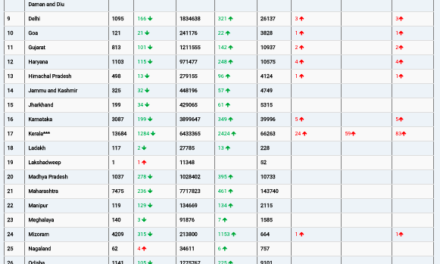Presented at the Heart Failure Association of the European Society of Cardiology (HFA-ESC) 2024 Congress
In a significant stride towards integrating holistic practices into conventional medical treatments, a recent study from India has found that a year-long customized yoga therapy program, when combined with guideline-directed medical therapy (GDMT), markedly improves heart failure measures linked to long-term prognosis. The findings, presented at the Heart Failure Association of the European Society of Cardiology (HFA-ESC) 2024 congress, highlight the potential of yoga as a beneficial adjunct to standard heart failure management.
The study, conducted by Dr. Ajit Singh and colleagues from Kasturba Medical College in Manipal, Karnataka, involved 105 patients. These patients were assigned either to a combination of yoga therapy and GDMT or GDMT alone. Over a 52-week period, the study observed a notable shift in the New York Heart Association (NYHA) functional class among participants.
“Yoga therapy has a beneficial impact on heart failure patients on optimal medical management,” stated Dr. Singh. The study demonstrated “an overall improvement in left ventricle dimensions and function,” he added.
Challenges and Insights
Despite promising results, the study faced significant challenges, particularly in patient retention. Nearly a quarter of participants dropped out by the six-month mark. Dr. Singh noted the difficulty of daily follow-ups but suggested that a longer duration of yoga therapy could be a “game changer.”
Session co-chair Dr. Dana Dawson from the University of Aberdeen pointed out that for yoga therapy to be widely accepted in clinical practice, a randomized study would be necessary. The non-randomized nature of the current study resulted in baseline discrepancies that made the groups “incomparable.” However, she acknowledged that the study demonstrated the feasibility of yoga for heart failure patients and produced some significant results when comparing baseline and follow-up outcomes within the yoga group.
The Unique Benefits of Yoga
Dr. Dawson highlighted that yoga might be particularly effective because it combines physical exercise with meditation, aligning with cognitive behavioral therapy principles. “It’s not going to be everyone’s cup of tea,” she remarked, “but it could be suitable in countries where yoga is more commonly practiced as a behavioral, as opposed to lifestyle, intervention.”
Heart failure remains a “complex chronic disease” and a major concern for healthcare sectors globally, including in India, where its prevalence is high. Dr. Singh emphasized that existing literature supports the role of yoga and other lifestyle modifications in improving the quality of life for heart failure patients. However, there was a lack of studies investigating yoga therapy as an adjunct to standard-of-care treatment.
Study Design and Results
The study included patients aged 30-70 years with persistent heart failure symptoms, an ejection fraction of less than 45%, and NYHA class III or lower heart failure. Participants, all of whom had undergone a cardiac procedure 6-12 months prior, were divided into two groups: one receiving GDMT alone, and the other GDMT plus a customized yoga program. The yoga regimen comprised pranayama breath work, meditation, and relaxation techniques, taught by experienced faculty.
Patients were supervised for one week before continuing self-administered yoga at home for 45 minutes weekly, with follow-up by an instructor. Assessments were conducted at baseline, six months, and one year, using echocardiography and other measures.
Of the 110 patients initially recruited, 85 completed the study, with 40 in the yoga group. The average age was 49 years, and 82% of participants were men—a major drawback noted by Dr. Singh, as women were reluctant to commit to the year-long follow-up.
After 52 weeks, the yoga group showed significant improvements in systolic and diastolic blood pressure, heart rate, and body mass index compared to the GDMT-alone group. Ejection fraction in the yoga group increased from an average of 41.5% to 44.4%, whereas it slightly decreased in the GDMT-alone group.
Conclusion
The study revealed a marked improvement in NYHA class among yoga participants. The proportion of patients with class I heart failure rose from 12% to 47%, while those with class II and III heart failure saw significant reductions.
These findings suggest that incorporating yoga therapy into heart failure treatment could offer substantial benefits. However, further research, particularly randomized studies, is necessary to confirm these results and establish yoga as a standard component of heart failure management.
No funding or relevant financial relationships were declared for this study.











